Blood and Guts (17 page)
Authors: Richard Hollingham

Barnard had been studying the problems of heart transplants
for some time, although much of what he learnt was from other
surgeons rather than his own experiments. He travelled to see
Shumway at Stanford, and visited Longmore in London to witness
his heart-lung transplants on dogs. Barnard was personable, antiapartheid
and had something of a reputation – the handsome
young man's interest in affairs of the heart extended beyond pure
technical interest. While in London, he also attempted to seduce
one of Longmore's nurses (with some success apparently).
Barnard had learnt from the greats, and in an obscure South
African hospital, undisturbed by the authorities, he decided the
time was right to put his knowledge to the test. On 3 December
1967 he removed the beating heart of a twenty-five-year-old female
car crash victim, pronounced dead by a neurosurgeon. The recipient
of this fresh young heart was lying ready in an adjacent
operating theatre. Fifty-three-year-old diabetic Louis Washkansky
had already suffered several heart attacks and, quite frankly, did
not have long to live. The operation took two hours. Washkansky's
new heart started beating and kept beating. A day later he was
awake and talking. A few days later he was out of bed. Eighteen
days later he was dead.
Washkansky died of pneumonia. The drugs used to suppress his
immune system to prevent the heart being rejected had also left him
open to infection. But no one remembers Washkansky. Christiaan
Barnard was the hero of the day – an instant celebrity. Barnard
would be received by the pope, entertained by presidents and prime
ministers. He became the world's most eligible bachelor, dating a
string of beautiful and famous women.
Some of Barnard's rivals expressed more bitterness than others.
Longmore was pleased for him. Others muttered that they had
done all the work only for Barnard to take the glory. And what glory.
Who cared about the second man to fly across the Atlantic (Bert
Hinkler), to run the four-minute mile (John Landy) or to climb
Mount Everest (a matter of some debate)? Christiaan Barnard
would be the man in the history books.
But while Barnard had won the main prize, there was still a
degree of national pride at stake. If South Africa could do it, why
not the United States, Great Britain or France? The same bureaucrats
who had been so reluctant for Longmore's London hospital to
carry out a heart transplant were now asking what he was waiting for.
In January 1968 the second heart transplant was performed by
Adrian Kantrowitz in Brooklyn, so Shumway – the surgeon who had
spent so long developing heart transplant techniques – didn't even
get that honour. Shumway's operation was the fourth, and by the
time he came to operate later that month, Barnard had already
performed a second heart transplant.
The first British heart transplant (the world's tenth) took place
on 3 May 1968. The surgeon was Donald Ross (also a South African).
Longmore's role was to collect and deliver the donor heart. For some
reason this required a police escort through the streets of London.
In fact, the whole affair became a major public event, with a large
crowd of spectators, reporters and photographers gathered around
the door of the National Heart Hospital. It was, of course, a great
national achievement of a proud nation, etc., etc. However, the
patient, Frederick West, died of an 'overwhelming infection' forty-six
days later. And that was the problem: while the surgeons were getting
the glory, none of their patients were lasting very long. In the first few
years of heart transplant surgery, patients survived on average just
twenty-nine days. Despite all the euphoria, the awful truth was that
heart transplants were difficult, dangerous and complicated.
There are few surgeons as well known as the pioneers of heart
surgery. Heart surgeons were courageous, daring and bold. Heart
surgeons stood apart from the rest, almost every operation a matter
of life or death. When they succeeded, they saved lives. When they
failed, they had to be prepared to come back the next day and try
again. Many of them had personalities to match their abilities. Some
were self-confident, others were egotistical or arrogant. A few were
foolhardy or seemingly oblivious to risk. Most heart surgeons were
revered by their patients; many became national or international
celebrities – household names courted by the media, their faces on
the front page of
Time
magazine. Few people could name one of
today's heart surgeons, but then, thanks to pioneers such as Harken,
Bigelow, Lillehei,
*
Gibbon, Melrose and Barnard, major open-heart
surgery has finally become routine.
*
There is a curious footnote to Lillehei's career. In 1973 he was found guilty of tax evasion.
Although he was undoubtedly at fault, his crime was more one of carelessness than deliberate
evasion. He had always been bad at keeping financial records, and had performed many operations
for free. He carried out his last operation in 1973, but was to maintain a keen interest
in heart surgery until his death. At Lillehei's eightieth birthday party in 1998 many of
those invited to celebrate owed their lives to his expertise. He died a few months later, but a
great many of his patients live on.
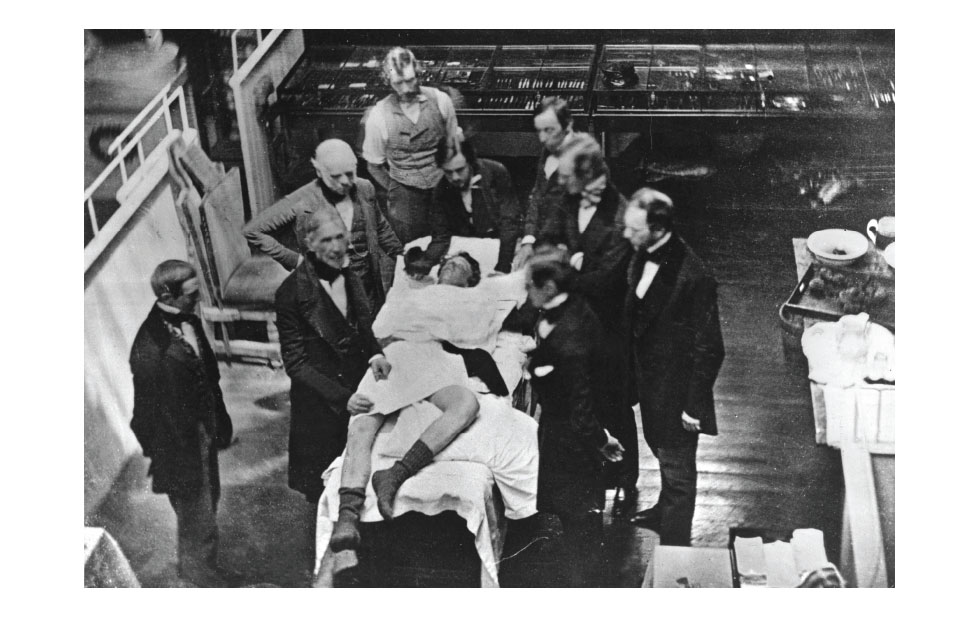
A photograph taken in 1848 of an operation to be carried out under anaesthetic at the
Boston General Hospital, Massachusetts. Judging from the sprawled position of the unconscious
patient, it looks as if he is about to lose a leg, although it is curious that he is wearing socks.
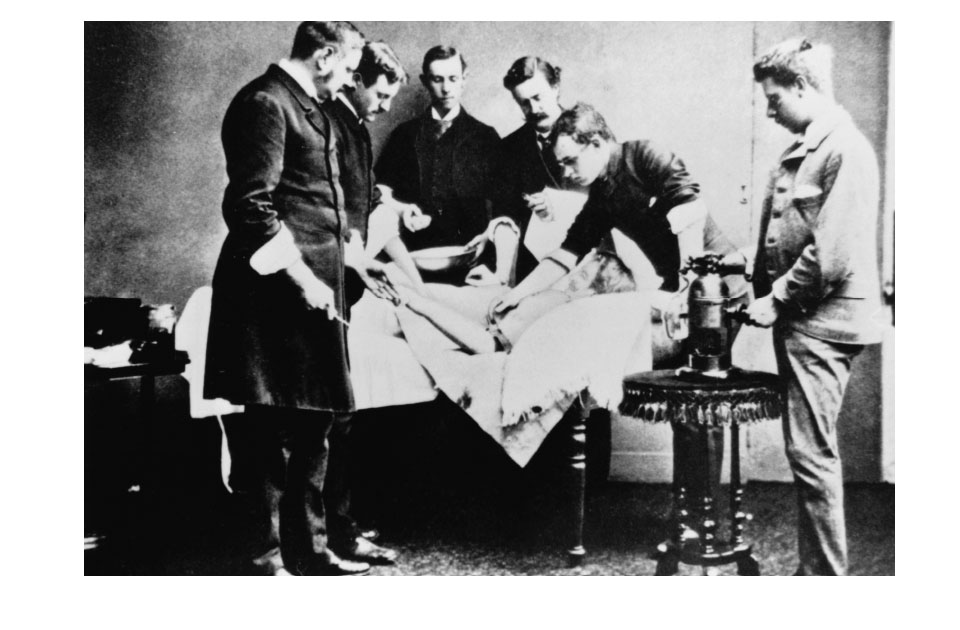
This photograph, taken in 1883 to demonstrate Lister's antiseptic
operating technique, appears to be somewhat staged. The carbolic spray is
being operated by the man on the right.
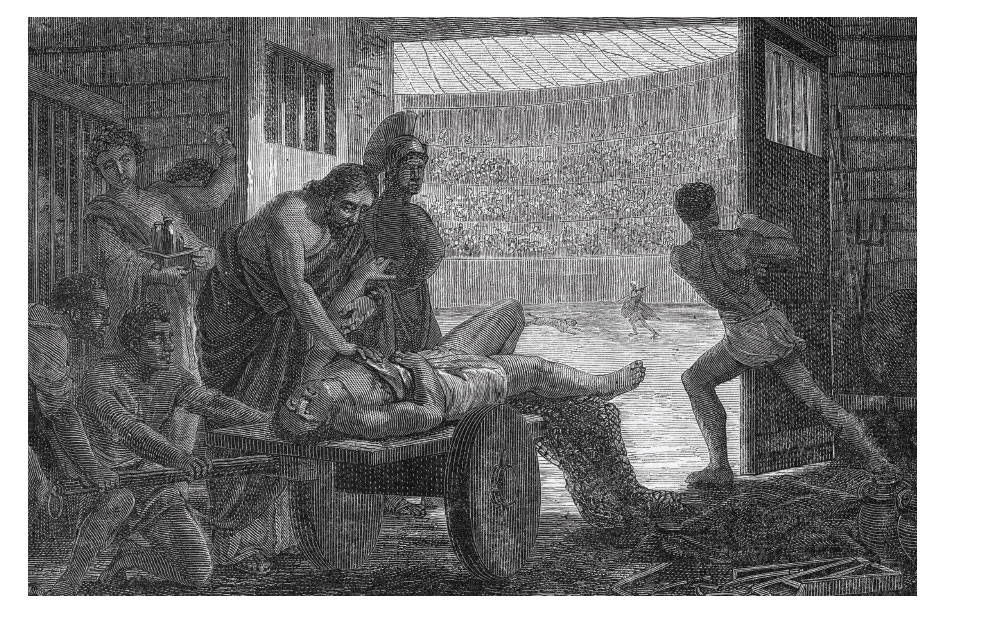
Galen attends to a wounded gladiator as the crowds bay for more blood.
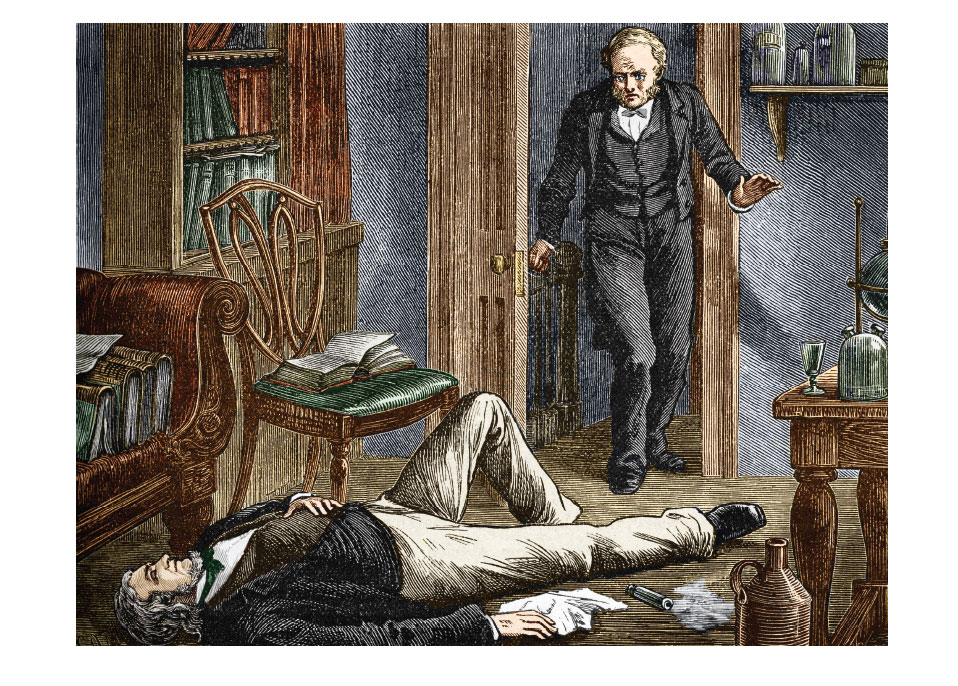
Simpson's butler walks in to find the surgeon collapsed on the floor –
another successful experiment on the properties of anaesthetics.
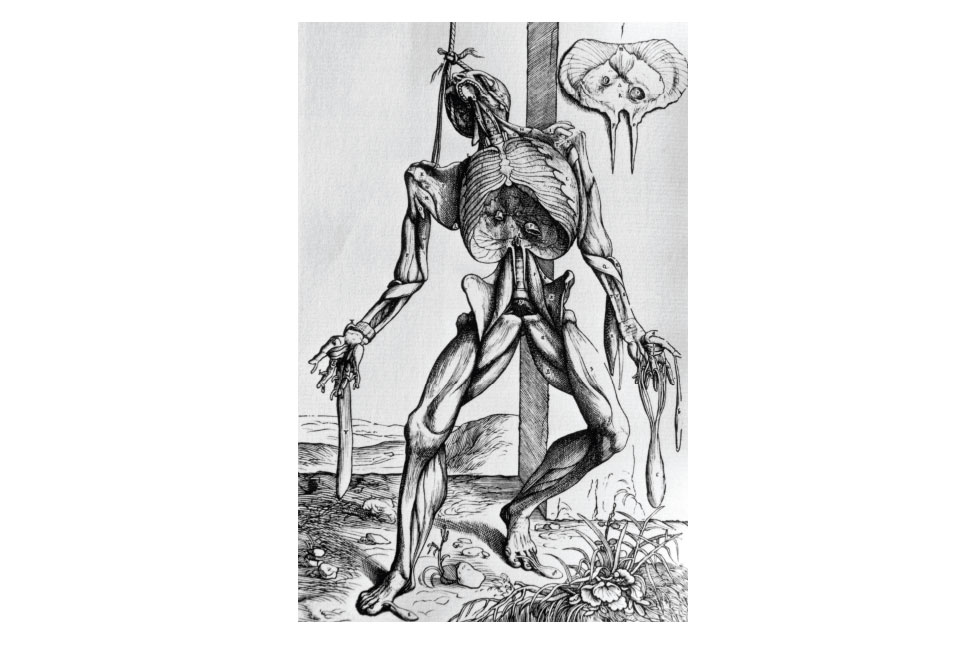
A 'muscleman' illustration from
Vesalius'
De Humani Corporis Fabrica
(1543)
alludes to his foray into body snatching.
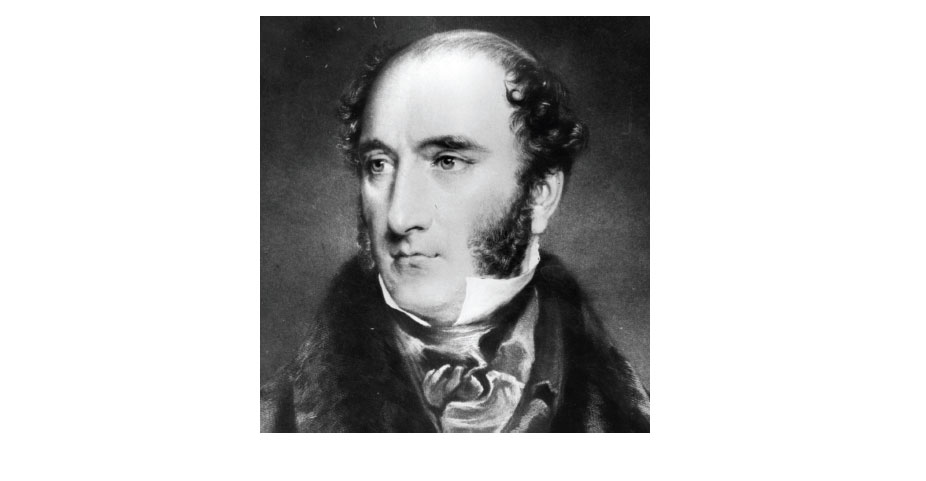
Robert Liston: 'sharp features,
sharp temper'.
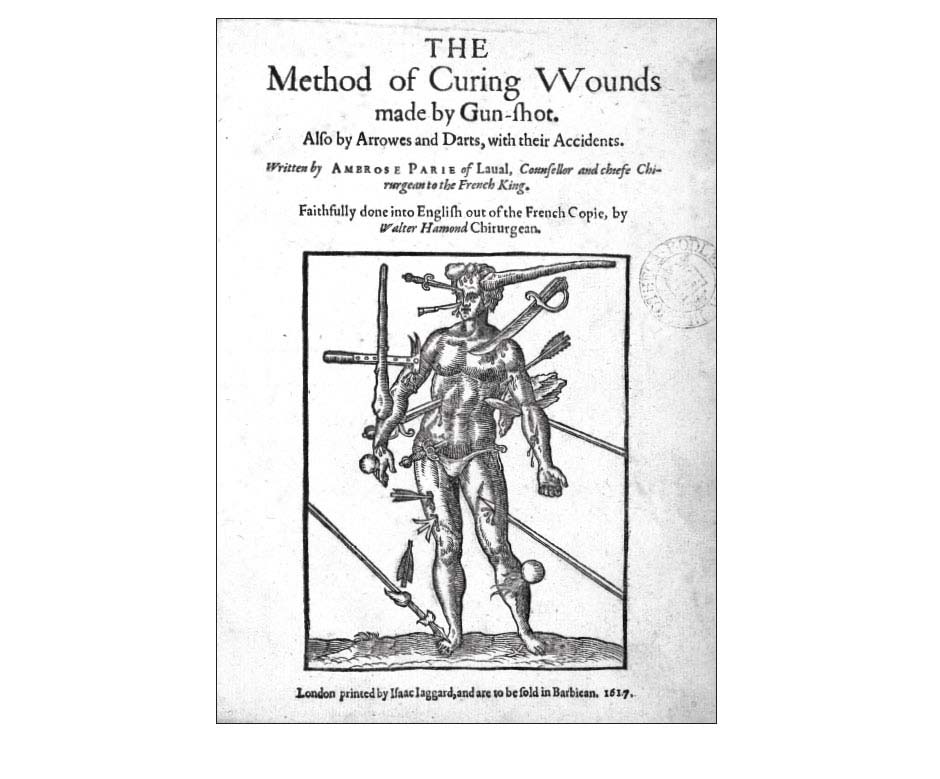
The man of
wounds. Suggesting
most of these were
curable seems wildly
optimistic.
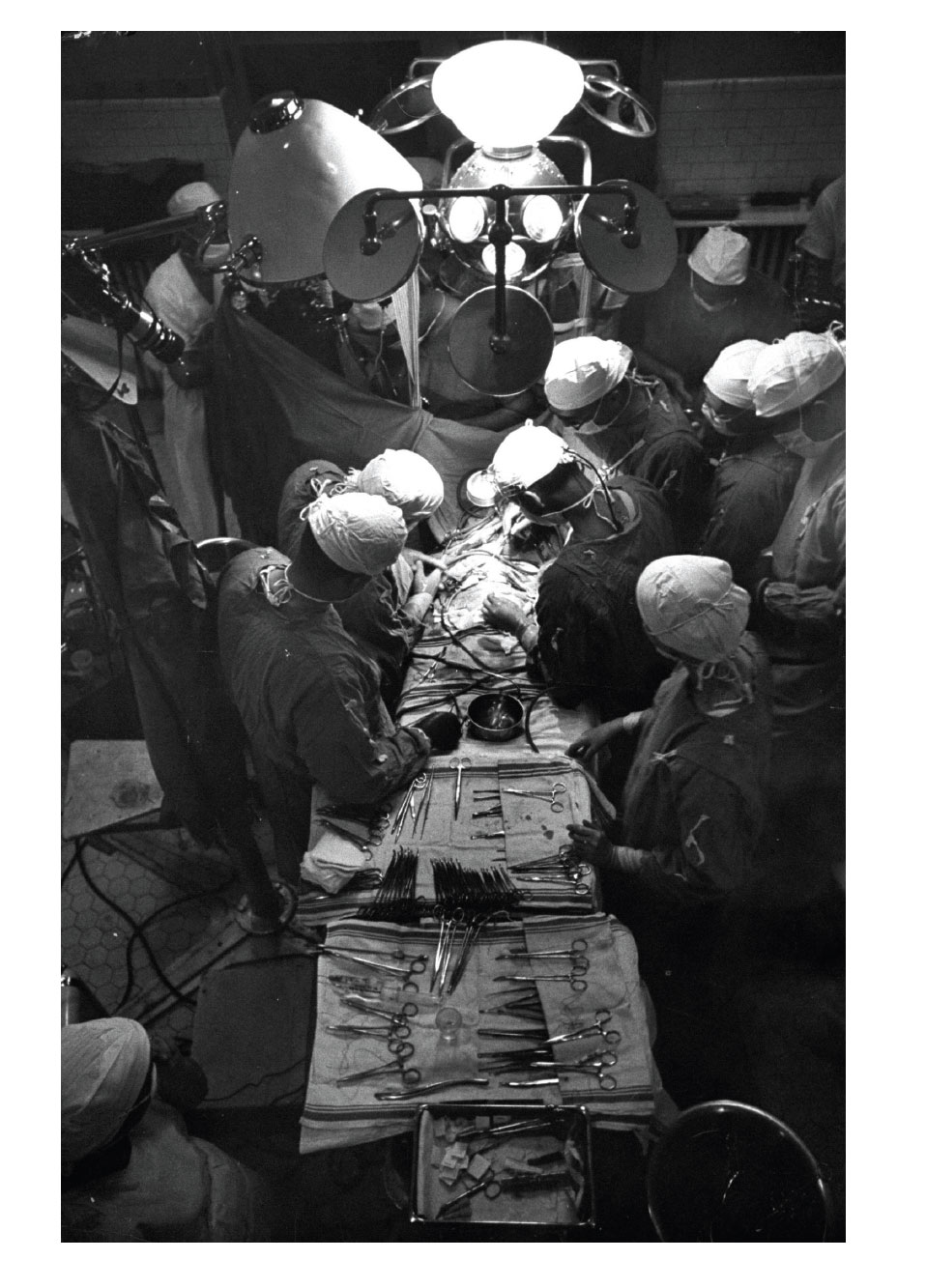
You can sense the intensity in the operating theatre
as Walter Lillehei performs open heart surgery using crosscirculation.
The first of these operations took place in 1954.
